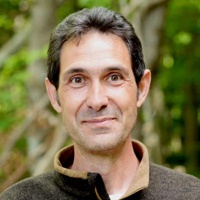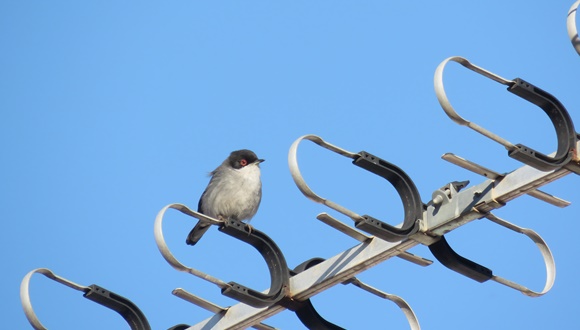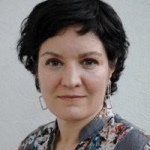The soundscape created by birds is becoming quieter and less varied, with potential effects on people's health
The favourable properties of natural soundscapes are changing, due to declining bird populations and their new geographic distribution. As a consequence, the trill of birds is changing and birdsongs at dawn are becoming quieter and less varied.
Natural sounds facilitate our direct connection with nature, and science has long shown that bird songs improve our physical health and psychological well-being. To reconstruct the soundscapes of more than 200,000 locations over the past 25 years, an international team of researchers has developed a new technique that combines bird-tracking data from citizen science observations with outdoor recordings of individual species.
The soundscapes of more than 200,000 places have been reconstructed over the last 25 years, located in Europe and North America
The work covers locations in Europe and North America and is led by Simon Butler of the University of East Anglia (Great Britain). The study sought to address the lack of historical sound records from most locations, so a new approach needed to be developed to address this. The result is the article ‘Bird population declines and species turnover are changing the acoustic properties of spring soundscapes’ published today in the journal Nature Communications.

"The acoustic structure of natural soundscapes generated by birds is becoming simpler and less heterogeneous, due to the decline of bird species"
LLUÍS BROTONS, CSIC researcher at CREAF.
Lluís Brotons, CSIC researcher at CREAF, has been involved in the study and attributes the generalized decrease in the biodiversity and sound intensity of birds in particular to changes in the composition of their communities. "The result indicates that, due to the decline of bird species, the acoustic structure of natural soundscapes generated by birds is becoming simpler and less heterogeneous", according to Brotons. These results suggest that the soundtrack composed by nature is increasingly silent. On the other side, Sergi Herrando, CREAF and ICO researcher, says that “in an increasingly urban, sedentary society surrounded by barriers to accessing the natural environment (including information technology), the experience provided by natural stimuli is disappearing, such as birdsong, that has informed and accompanied us for most of our way as a species”.

"In an increasingly urban, sedentary society and surrounded by barriers to access to the natural environment, natural stimuli such as the singing of birds, which has informed and accompanied us for most of our journey as a species, are disappearing"
SERGI HERRANDO, CREAF and ICO researcher.
According to the study's director, Simon Butler, "one of the fundamental pathways through which humans relate to nature is in chronic decline, with potentially wide-ranging implications for human health and well-being".
This UK university-led project involved ornithologists and scientists from centres and institutes in Austria, Belgium, Czech Republic, Denmark, Finland, France, the Netherlands, Norway, Poland, Romania, Slovenia, Spain and Switzerland.
Reconstructing soundscapes
To reconstruct historical soundscapes, data from annual bird counts from the North American Breeding Bird Survey and Pan-European Common Bird Monitoring Scheme sites are combined with recordings of more than 1,000 species from Xeno Canto, a comprehensive online database that makes available the trilling songs and calls of birds from around the world.
The acoustic characteristics of these sound realities were then quantified using four indices designed to measure the distribution of acoustic energy across frequencies and time. These indices are based on the complexity of song and the variety of contributing species, but quantify the diversity and intensity of each soundscape as a whole.

The researchers state that the relationship between changes in bird community structure and the resulting soundscape characteristics is not easy to predict. The first researcher in the paper explains that " given that people predominantly hear, rather than see, birds, reductions in the quality of natural soundscapes are likely to be the mechanism through which the impact of ongoing population declines is most keenly felt by the general public".
Catriona Morrison, a postdoctoral researcher in UEA's School of Biological Sciences and responsible for the analyses, notes that "in general, we find that sites that have experienced a greater decline in total abundance and/or species richness also show a greater decline in acoustic diversity and intensity. However, the initial community structure and the complementarity of species' call and song characteristics also play an important role in determining how soundscapes change".

"Unfortunately, we are experiencing a global environmental crisis and we now know that the decline in the connection between people and nature may be contributing"
CATRIONA MORRISON, postdoctoral researcher at the University of East Anglia (Gran Bretaña).
For example, the loss of a species such as the Willow warbler (Phylloscopus trochilus), which has a rich and intricate song, is likely to have a greater impact on the complexity of the soundscape than the loss of a strident corvid or gull species. This will also depend on how many willow warblers are at the site and what other species are present. In the words of Catriona Morrison, "unfortunately, we are living through a global environmental crisis, and we now know that the diminishing connection between people and nature may be contributing to it".

As we collectively become more aware of our natural environment, we also begin to notice or care more decisively about its deterioration. Studies such as the one published today in Nature Communications aim to raise awareness of these losses in tangible, relatable ways and demonstrate their potential impact on human well-being.
Associated material:
An example of reconstructed soundscape as part of the scientific work. (Dropbox link)
Reference:
‘Bird population declines and species turnover are changing the acoustic properties of spring soundscapes’. DOI: 10.1038/s41467-021-26488-1. Nature Communications







